Dragons of Ora
Dragons are revered and feared magical creatures with a deep connection to The Roiling Conflux of the Elemental Demiplanes and the powerful magic that suffuses the Empyrean Universe. Dragons roam every environment within the mystical lands of Ora. These majestic beings come in a variety of forms and possess unique abilities, each reflecting the environment in which they make their lairs. Divided into Lesser Dragons and True Dragons, these creatures hold a significant place in Ora's mythology, history, and the hearts of its inhabitants.
Lesser Dragons
Many creatures, including wyverns and pseudodragons, have draconic blood.
Dragonnel
Description
Dragonnels are small, elegant dragonkin about the size of a warhorse with smooth cales that vary by breed from reddish brown to green, or black. They have long slender legs and necks and are raised throughout Acheron to be mounts. Dragonnels are known to be extremely territorial and possessive of their riders. They are also, known for their curiosity and inquisitiveness.
Lair Environment
In the wild, dragonnels often make their homes in groups of three to five, on open savannahs, preferring rocky outcroppings or hills if available. This allows them to live near their preferred prey, herd animals like antelope.
Drake
Description
Drakes are muscular, mostly wingless dragons with a penchant for territorial behavior and hunting prowess. Many varieties are bred for companionship and protection like dogs, particularly by humans and tieflings. Breeds range in size and shape from the cow sized guard drakes to the tiny, winged alehouse drakes.
Lair Environment
In the wild drake lairs can be found across Ora in nearly any environment, they often live and hunt in family groups or packs of 5 to 10 individuals.
Faerie Dragon
Description
Faerie dragons are tiny, playful, and mischievous creatures, known for their vivid, ever-changing colors and magical abilities. They are native to the Feywild and have insect like wings often reminiscent of butterflies or dragonflies.
Lair Environment
Found throughout the Feywild, the only known hive of faerie dragons on Ora can be found on the Eladrin island of Thesselin in the Sea of Dreams region of Acheron.
Pseudodragon
Description
Pseudodragons are tiny, intelligent dragons with an inquisitive disposition, often forming deep psychic bonds with spellcasters. They come in a variety of colors and are bred to be magical familiars by the Shadar-kai. Pseudodragons have a body shape exactly like their gargantuan cousins, but have a stinger on the end of their tails like wyverns.
Lair Environment
In the wild, pseudodragons prefer hidden, sheltered spots in dank caves within dense forests where they hunt insects and small game at dawn and dusk in flights of hundreds of individuals.
Wyvern
Description
Wyverns are aggressive, two-legged dragons with deadly stingers on their tails, feared for their aerial attacks. Though smaller than true dragons, wyverns can still reach formidable sizes. They are often used as mounts by the Uruks and other goblinoid races.
Lair Environment
They nest in high, craggy cliffs and rocky caves overlooking desolate plains.
True Dragons
True dragons are winged reptiles of ancient lineage and fearsome power. They are known and feared for their predatory cunning and greed, with the oldest dragons accounted as some of the most powerful creatures in the world. Dragons are also magical creatures whose innate power fuels their dreaded breath weapons and other preternatural abilities.
Amber Dragon
Description
Amber dragons are generally smaller compared to other species of gem dragon. They have thick, bark-like skin that ranges from shades of dull gray to dark brown. Their eyes are richly colored like their namesake, amber, and they have a mane of horn-like amber spikes. Like other gem dragons, ambers have psychic abilities, though they manifest differently from those of their gem dragon brethren. Ambers can speak telepathically with beasts of the forest they call home and even communicate with plants.
Compared even to other secretive dragons, they are perhaps some of the most aloof and solitary, only matched by some of the rarest breeds like Moonstone Dragons.
The unique dragon breath of these creatures is a spray of sticky, scalding sap. This sap rapidly hardens around those soaked in it, trapping them in an immobilizing resin shell.
Lair Environment
Unlike many species of dragons, these creatures do not usually make permanent lairs, instead roving through their large forested habitats. this can encompass an area as large as 900 square miles (2,300 square kilometers). Amber dragons typically prefer dense, primeval, coniferous forests.
Amethyst Dragon
Description
Amethyst dragons are extremely intelligent and possess powerful telepathic abilities and translucent amethyst-colored scales shaped like naturally forming crystals. Amethyst dragons are considered wise even by dragon standards and prefer talking things out to resorting to combat. However, if pressed they can be formidable opponents.
The amethyst dragon’s breath weapon is a line of force with a concussive effect that can stun or injure beings caught within.
Lair Environment
On Ora, amethyst dragons enjoy making their lairs on the shores of lakes and pools such as tarns lying in remote places in highlands and mountains. They might even dwell in caves below the water in such places.
Cloud Dragon
Description
Cloud dragons are ethereal beings that float among the clouds, wielding control over storms and weather. They are long, sinuous, serpentine creatures that can fly with ease, despite having no wings. They are said to change color with age: hatchlings have silver-white scales tinged with red, and as they grow white shifts to a brilliant sky blue and the red lightens through sunset orange, until, as adults the color deepens to red-gold.
Cloud dragons can assume the gaseous form of a cloud at will. When they do, they change color according to mood: dark gray when angry, pearly white when resting or neutral, and golden to rose-colored when satisfied, pleased, and happy.
Also called storm drakes or sky shrikes, cloud dragons are reclusive, aloof creatures that rarely speak to other creatures and who dislike intrusions.
Storm drakes have a breath weapon in the form of an icy cone of wind.
Lair Environment
They make their lairs within the heart of towering thunderheads above Ora's open skies.
Cobra Dragon
Description
Cobra dragons resemble serpents with bat-like wings. They have glossy black scales on the back and sides, and bright orange scales on the underbelly. On the neck directly behind the head is a hood of skin akin to that of a king cobra. The favorite hobby of cobra dragons is collecting skulls, with skulls of rare and mighty creatures being the most valued by these creatures. Cobra dragons do not usually use magic like other dragons, and actually have a strong resistance to it. They are immune to their own breath weapons, as well as all other fire- and heat-based attacks.
A cobra dragon can produce two different breath weapons, they can spit acidic, flammable, venom extremely long distances with alarming accuracy. They can also breathe a line of deadly fire.
Lair Environment
Cobra dragons dwell in tropical and subtropical climates and often make their lairs underground in caves or in ancient jungle ruins, however they have no liking for swamps.
Deep Dragon
Description
Deep dragons’ black-and-gray hide is smooth like a salamander’s, and their eyes are pale. As they age, their spore breath causes fungi to bloom across their skin, especially around the head and neck. Their wings are attached to their front legs and can fold in close to the body, allowing deep dragons to easily maneuver through relatively narrow tunnels. Deep dragons have the ability to exhale magical spores that instill fear and scar the mind.
Lair Environment
Deep dragons make their lairs in well-hidden caves or the sunless beaches of deep subterranean lakes. These sites are often inaccessible without the ability to fly or dive underwater. A well-cultivated lair abounds with Underdark fungi and plants, with the floor, walls, and ceiling covered in carpets of mold and moss, or featuring larger mushrooms and plants in neatly organized displays.
Dragon Turtle
Description
Dragon turtles are immense, ocean-dwelling dragons with armored shells and formidable elemental breath weapons. Dragon turtles are among the most fearsome creatures of the oceans. As large and voracious as the oldest of its land-based dragon kin, a dragon turtle strikes with its deadly jaws, steaming breath, and crushing tail. A dragon turtle’s rough shell is the same dark green color as the deep water where this monster dwells. Silver highlights lining the shell resemble light dancing on open water, and a surfacing dragon turtle is sometimes mistaken for the reflection of the sun or moon on the waves.
Lair Environment
Dragon turtles dwell in caves hidden in coral reefs or beneath the seafloor, or along rugged stretches of coastline. If a choice cave is already inhabited, a dragon turtle attacks its current residents in an attempt to take over.
Emerald Dragon
Description
Emerald dragons are the most curious, cunning, and manipulative of the gem dragons, wielding psionic power to weave illusions to deceive and disorient. They cloak their own presence so they can observe other creatures without being discovered as they collect information on everything from local cultural practices to supernatural occurrences.
A wyrmling emerald dragon’s scales are a dull, pale green, but they develop into richer and more varied shades of green as the dragon ages. Eventually, the scales become translucent and shimmer in the light, rippling as the dragon moves. The dragon’s horns and spines hover above the body, moving and shifting along the back and tail to mirror the dragon’s mood. An emerald dragon has two breath weapons. The dragon can exhale a wave of psychic dissonance that confuses its enemies, or alternatively a burst of thunderous sonic force.
Lair Environment
Emerald dragons’ preference for volcanic lairs often puts them in conflict with fire dragons. Despite their reluctance to reveal themselves to strangers, emerald dragons might approach experienced adventurers in the hopes of pitting them against fire dragon rivals.
Fire Dragon
Description
Fire dragons are beings of flame and fury, their scales aglow with the colors of inferno, and they are masters of pyromancy. The odor of sulfur and pumice surrounds a fire dragon, whose swept-back horns and spinal frill define its silhouette. Its beaked snout vents smoke at all times, and its eyes dance with flame when it is angry.
Lair Environment
Fire dragons lair in high mountains or hills, dwelling in caverns under snow-capped peaks, or within the deep halls of abandoned mines and dwarven strongholds. Caves with volcanic or geothermal activity are the most highly prized fire dragon lairs, creating hazards that hinder intruders and letting searing heat and volcanic gases wash over the dragon as it sleeps.
Forest Dragon
Description
The woodland-loving forest dragons sometimes compete for territory with cobra dragons in humid jungles and with amber dragons in subarctic taiga. However, a forest controlled by a forest dragon is easy to spot. A perpetual fog hangs in the air in a legendary forest dragon’s wood, carrying an acrid whiff of the creature’s poison breath. The moss-covered trees grow close together except where winding pathways trace their way like a maze into the heart of the wood. The light that reaches the forest floor carries an emerald green cast, and every sound seems muffled.
The most cunning and treacherous of true dragons, forest dragons use misdirection and trickery to get the upper hand against their enemies. A forest dragon is recognized by their green scales snd the crest that begins near its eyes and continues down its spine, reaching full height just behind the skull.
Lair Environment
At the center of its wood, a forest dragon chooses a cave in a sheer cliff or hillside for its lair, preferring an entrance hidden from prying eyes. Some seek out cave mouths concealed behind waterfalls, or partly submerged caverns that can be accessed through lakes or streams. Others conceal the entrances to their lairs with vegetation.
Ice Dragon
Description
Ice dragons command the biting cold, their scales glistening with an icy sheen, and they are adept at cryomancy. An ice dragon rests on high ice shelves and cliffs in its lair, the floor around it a treacherous morass of broken ice and stone, hidden pits, and slippery slopes. As foes struggle to move toward it, the dragon flies from perch to perch and destroys them with its freezing breath.
Lair Environment
Ice dragons lair in icy caves and deep subterranean chambers far from the sun. They favor high mountain vales accessible only by flying, caverns in cliff faces, and labyrinthine ice caves in glaciers. Ice dragons love vertical heights in their caverns, flying up to the ceiling to latch on like bats or slithering down icy crevasses.
Iron Dragon
Description
Iron dragons are a larger variety of dragon, with wyrmlings being at least 9 feet (2.7 meters) long and great wyrms being as much as 289 feet (88.1 meters) long (body length 163 ft (49.7 m), tail length 126 ft (38.4 m)). They have broad, almost shovel-shaped heads with multiple thick, backwards-pointing horns, and large plates that resemble shark fins running down their spine. Their scales are a glossy, metallic black that, after adulthood, began to take on silver highlights; great wyrm scales look like moonlight on a dark, rippling pool.
Iron dragons Are known to have two different breath weapons: a cloud of sleep gas, and a cone of electrical sparks.
Lair Environment
Iron dragons have been recorded in several locations, such as in the peaks south of Nul Grimdrun, and in the Dragonreach Mountains. An entire family was reportedly lairing in the Sunrise Mountains, and there was reports of a particularly angry one living in the mountains north of the northeastern end of Icelace Lake
Mercury Dragon
Description
Mercury dragons, also known as quicksilver dragons have sleek and serpentine bodies with a long whip-like tail, lacking the muscular bulk other dragon types have. They have slender heads with a long, pointed snout, and with horns curving backward from behind their jaws and eyes.
Mercury dragons are quick and agile flyers, and they have smooth, flat, barely discernible silver-white scales that seem to flow together as one. While at birth their scales are dull silver in hue, as a mercury dragon gets older its scales became brighter, until they became as brilliant as a mirror. Likewise, their eyes are deep blue or violet with a dark pupil and a pale yellow-white iris in their younger years, but as they get older, their pupils became paler and brighter, their eyes resembling silver orbs.
While mercury dragons have no venomous attacks, their flesh is highly toxic.
Much as their name suggests, mercury dragons have mercurial personalities. They are whimsical, impulsive dragons that delight in unpredictability and are reputed to often be mentally unstable as well. Their mood shifts from time to time, and they rarely finish a thought before moving on to the next thing that comes to mind. An individual mercury dragon acts depending on its recent experiences. Mercury dragons that are bored or puzzled may attack without any provocation, while those who have experienced a lot of events are usually more open to talk to their adversaries instead of fighting.
Like their cousins the steel dragons, mercury dragons crave lived experience and therefore spend a lot of time polymorphed into humanoid form. However, unlike their steel relatives, they are not the most patient creatures and their subterfuge often lasts only as long as the dragon finds the experience interesting.
Mercury dragons have the unusual ability to breathe a line of intense focused laser light that causes blindness and burns whatever it touches. Legends say they can also turn into liquid metal at will.
Lair Environment
Mercury dragons make their lairs in lava tubes and other narrow, winding tunnels or high caves, preferring those that allowed them to enjoy clear air and bright sunlight, and their lairs usually face east to catch the morning sun. They also frequent places that house portals to The Roiling Conflux, a place they like because of its ever-changing nature.
A mercury dragon's hoard is a hodgepodge of coins, jewelry, and junk items from scores of lands and dozens of eras, as mercury dragons aren't good at assembling matched sets or cohesive collections. They may even be willing to exchange something from their hoard for some item they have heard about but never seen, especially when they are trading away a duplicate.
Mist Dragon
Description
Mist dragons are ephemeral beings, able to transform into swirling mists and manipulate fog and vapor. Mist dragons have blue to white scales with metallic spots that become more grey as the dragon ages. Its eyes are oceanic colors, usually green, with silver pupils that become more prominent with age until most of the eye is silver. Mist dragons' physical characteristics include a fin running from the head to the end of its flattened tail. Their head thins in an arrow-like shape from the snout and ends in a thick neck. Heavy ridges lay over the eyes, two horns protruded from the back of the skull, and clusters of smaller horns sit at the base of its upper jaw.
Mist dragons are antisocial creatures that seclude themselves inside their lairs where they desire no interaction with sentient creatures, spend large periods of time in contemplation, and avoid combat whenever possible.
Mist Dragons are able to breathe a scalding cone of mist that obscures a wide area.
Lair Environment
They are often found within ancient, mist-shrouded groves and haunted moors. They also like to make their homes in caves behind waterfalls, deep within forests or jungles that afford them the privacy they crave.
Moonstone Dragon
Description
Moonstone dragons are graceful and elegant creatures with opalescent scales and ruffs of emerald-green fur running down their chins, chests, backs, and tails. One horn arcs from the back of a moonstone dragon’s skull and another at the tip of the nose; the two horns together form a shape that’s reminiscent of a slender crescent moon. Moonstone dragons are playful and impetuous forces of mischief in their early years, but the best of them mature into wise teachers and storytellers who anchor Feywild communities. The worst of them are pompous and ill behaved, but even those remain gentle by nature and curious about all things—especially travelers from faraway places.
Moonstone dragons can project themselves into the realm of dreams to communicate with the creatures that sleep near their lairs. In this way, they inspire artists and poets, encourage great thinkers, and spur adventurers to heroic deeds. They sometimes give guidance to those in need or request help from adventurers to encourage them to greatness.
As a rule, moonstone dragons are not particularly interested in gold or copper, but they love silver, platinum, and mithral. They also cherish treasures whose value can’t be easily quantified—a song sung from the heart, a lock of a loved one’s hair, or a painting of a favorite place. A story of happy times fondly remembered is more precious to a moonstone dragon than a sack of gold.
Lair Environment
For their lairs, moonstone dragons look for places kissed by the moon; lonely peaks, forest clearings, and placid lakes are among their favorite sites. Their whimsical nature makes them more likely than other dragons to establish multiple lairs even at a young age. They link their scattered sites with magic portals, often splitting their time between the Feywild, the Substantial, and the Void.
Obsidian Dragon
Description
Obsidian dragons are extremely intelligent and formidable gem dragons with a strong connection to The Demiplane of Fire. As hatchlings, their scales are rough, dark grey, and craggy, but as they grow, their scales changed to solid black, smooth and glasslike, erupting in sharp shards and spikes.
Obsidian dragons are unafraid of combat, making rapid analyses of their opponents in seconds and attacking accordingly; or, more rarely, retreating to avoid or ambush foes too powerful for them to quickly overpower. They prefer to start combat using their devestating lava breath weapon and ranged attacks, before closing to use physical attacks to finish enemies off.
Lair Environment
Obsidian dragons prefer warm mountainous or underground environments (such as by volcanoes many are known to make their lairs in coal mountains found in The Demiplane of Fire.
Prismatic Dragon
Description
There is only one known Prismatic dragon in all of Ora. It is a great wyrm of considerable size, and immense power, known by the name Prismari Radiance Manifest. Prismari makes their lair on the shores of Prismatic Lake in the Leliurium Empire. Prismari's scales radiate a breathtaking array of colors, and they are a being of pure magic. Notably, Prismari emits no odor, and makes no sound when flying or walking.
Prismari is an optimistic creature that values the sheer diversity of life as well as the vast spectrum of the mortal experience. While they do not go out of their way to socialize with humanoid communities, they are always welcoming to visitors.
Prismari's breath weapon is a cone of seven lights, each with varying effect based on color, making their breath weapon unpredictable and powerful. The dragon is also surrounded by a force of light, which is capable of deflecting ranged attacks. This shield of light also grants them immunity to blinding effects and light sources.
Lair Environment
Prisnmari's lair is an ancient shrine built in their honor along the eastern coast of Prismatic Lake. The complex of beautiful stone and glass buildings surrounding the shrine is the size of a small city, and is inhabited by a large retinue of humanoids that serve the dragon's needs.
Quartz Dragon
Description
Quartz dragons are magnificent creatures with crystalline scales, renowned for their capacity to refract light into dazzling displays. Quartz dragons enjoy an innate psionic connection to the Upperworld that suffuses their bodies as well as their personalities with light. Though they prefer to live in desolate, frigid regions, many of them are among the friendliest of dragonkind, nurturing and optimistic.
When they hatch, quartz dragons have dull gray scales, with a few white or clear crystalline points, allowing the wyrmlings to blend in to rocky terrain in the face of danger. As they age, their scales turn snow white, then slowly fade to transparency. The oldest quartz dragons have scales of perfect clarity that bend and refract light, sometimes making them difficult to see clearly. Quartz dragons exhale a burst of brilliant radiance in the form of their breath weapon.
Lair Environment
They inhabit glittering ice caverns hidden within Ora's glacial tundras.
Sand Dragon
Description
They have multi-colored scales in a variety of browns and yellows, though unlike other types of dragon their scales are leathery. They have small, webbed claws and very large, long mouths. Unlike most other types of dragons, they are wingless, and cannot fly under their own power. However, they are the most adept diggers, speeding under loose sand very fast. Instead their wings evolved to be a row of large articulated spines on each side of their body with a membrane webbing connecting each of them. Together the structure forms a fin. They can lay these fins flat against their body when they are burrowing or flair them out to enhance their frightful presence when attacking.
Sand dragons are both ferocious and intelligent. They are not particularly friendly or talkative, and this is mostly due to the fact that they consider most other creatures to be food, including people, and the idea of talking to their food is silly to them.
A sand dragon's breath weapon is a line of acid, which reduces most animals to little more than sand and dust. Sand dragons are also born with an immunity to acid and the effects of desert heat. They can even survive indefinitely in an airless environment.
In terms of senses, sand dragons have the ability to detect vibrations in the ground in order to detect approaching prey. Their eyes can see in areas of both low-light and total darkness. Additionally, older and more powerful sand dragons gain a certain amount of power over the sand and winds around them. They whip up vortex-like sandstorms and summon powerful elementals.
Lair Environment
They carve out labyrinthine burrows deep beneath the sun-scorched sands, and often have many large disconnected chambers since they burrow through the sand as easily as other creatures walk through the air.
Sapphire Dragon
Description
Sapphire dragons’ scales and wing membranes show varied shades of blue, ranging from the light tones of a spring sky to the rich, crystalline azure of sapphire gems and compressed glacial ice. In the light, the scales glitter and shine like luminous starbursts. The dragons’ psionic nature is evident in the horn and bone structures of their bodies. Their tail barbs and horn tips are all separate pieces, but they float in place, held aloft by psychic energy while the dragons live. These levitating horns and spines shift slightly with the dragons’ moods, bobbing in amusement or flaring with anger.
The thunderous clash of conflict is part of the very nature of sapphire dragons. Militant and territorial, they defend their lairs fiercely, ambushing intruders and plotting assaults against their rivals. The sonic pulse of their breath weapon sows weakness, leaving the victims unable to fight back.
Lair Environment
Sapphire dragons make their homes in extensive cave systems. As they grow older, they make increasingly complex renovations to their lairs, using their inherent magic and natural tunneling abilities to great effect. Eventually, a sapphire dragon’s lair is a dizzying honeycomb of hidden passages, deceptively thin walls, and secret chambers that allow the dragon to travel from one end to the other unseen by intruders. The most secure lairs might feature no accessible entrances or exits at all, with the dragon relying on tunneling or shaping stone to come and go.
Sea Dragon
Description
Sea dragons, also known as sea drakes, or sea serpents, rank alongside dragon turtles as some of the most feared predators of the deep and inspire many sailors’ worst nightmares. Their strong fins propel them through the water at great speed.
Young sea dragons are agile hunters. They use reefs and natural camouflage to hide before they strike, picking off members of a ship’s crew one by one. Ancient sea serpents grow large enough to demolish whole ships, then feed at leisure on helpless sailors in the water. At any age, a sea serpent attacks with terrible bites, a lashing tail, a constricting grip, and a frigid breath weapon that can leave sailors’ corpses floating frozen amid the wreckage of their ships
Lair Environment
Their aquatic lairs are concealed within the deepest abysses of Ora's oceans. Sea dragons are as fiercely territorial as any other dragons, and they do not take kindly to ships passing over their domains without permission. Some can be appeased by offerings of treasure, but most demand that a ship’s crew sacrifice one or more of their own.
Shadow Dragon
Description
Shadow dragons are creatures of darkness, their obsidian scales blending seamlessly with the shadows they command. A shadow dragon ages slowly, over time a shadow dragon’s glossy black scales lose their luster and fade to a charcoal hue. Its leathery wings become translucent, its eyes paling to pools of opalescent gray. Shadow dragons find sunlight abhorrent, and they are weaker in bright light than they are in darkness. Darkness makes the dragon fade to a spectral shadow and it becomes more and more incorporeal as it grows in age and power.
A shadow dragons breath weapon is a blast of necrotic shadow energy that can raise its victim's as shades that will defend the dragon. As shadow dragons are creatures of the Shadowfell, they are often associated with the Shadar-kai of the Twilit Diarchy, and their generals often ride them into battle.
Lair Environment
When not in the Shadowfell, shadow dragons lurk within the lightless depths of Ora's ancient dungeons and caverns.
Solar Dragon
Description
A solar dragon (also known as a radiant dragon or a sun dragon) is born in the heart of a Seleste. It divides its time outside its lair between patrolling its territory and hunting for food. The dragon has a large, powerful body, golden and luminous, a pair of massive wings that give off light, and gleaming scales. It's tail is actually split into two to four flaming, feathery tails that trail the dragon as it flies through space as easily as a terrestrial dragon might fly through the air. It can see clearly even in intensely bright light. They are among the rarest of dragons, there are only ever 5 or 6 of them alive at any time.
Solar dragons are fond of treasure just as all dragons are, but in the airless void of space, they value food even more. Solar dragons are territorial carnivores, and they behave accordingly. A young solar dragon might lay claim to an asteroid belt, where food is relatively plentiful, while an ancient solar dragon might consider the entire Selestean system its hunting ground. They tend to give a wide berth to Humanoid folk, whom they find violent and tiresome. Trespassers who are detected in a solar dragon’s lair can expect to be met with resistance, followed by hostility, especially if the lair contains eggs.
A solar dragon egg has an obsidian shell, shiny black and opaque. When an egg is close to hatching, the shell becomes translucent, allowing the light from the unborn wyrmling’s wings to shine through.
Lair Environment
Solar dragons lair exclusively in the heart of Seleste.
Steel Dragon
Description
The sociable steel dragons prefer the company of humanoids to that of other dragons. Their reasons range from admiration to greed. Steels take humanoid form more often rather than their natural shape.
Compared to other metallic dragons, a steel dragon has a slight build and a small head. Swordlike frills grow from its head, elbows, and digits. Its wings consist of overlapping blades that look like feathers, and the scales on the dragon's chest resemble shields. When a steel dragon adopts humanoid form, it retains something of its draconic nature: gray eyes, pale skin, hair the color of steel, or affectations such as steel jewelry.
Steel dragons favor humans over other humanoids because of the race's adaptability and cleverness. For this reason, they live in human cities when possible.
Most steel dragons would rather talk than fight, yet like all dragons, they can be formidable opponents. In combat, they avoid melee and instead rely on their magical abilities. If truly losing a battle, a steel dragon is likely to teleport away. A steel dragon can breathe both a line of acid and a cloud of poisonous gas that knocks its adversaries unconscious.
Lair Environment
Because steel dragons live in towns and cities, they live as humanoids do–in houses and establish humanoid histories and families. In case an enemy discovers its identity, a steel maintains a secondary lair in a ruin, such as a crumbling temple, castle, or tower. The harder it is for other creatures to reach such a site, the better. Wards, traps, and guardians protect these refuges.
Topaz Dragon
Description
Upon hatching, topaz dragon wyrmlings’ scales are dull yellow-orange and have a cloudy or filmy look. As they age, their scales harden and clarify, becoming translucent and faceted, and ranging from bright yellow to rich amber in color. Their bodies are wider at the haunches, tapering in a wedge shape toward the head, and their wings are shaped to propel them through both air and water.
A topaz dragon’s psionic power manifests visibly in the gem-like spines that run in a ridge from the crown of the head to the tip of the tail. These spines hover above a living topaz dragon’s back, dancing and shifting with the dragon’s mood. Topaz dragons are powerful telepaths, capable of communicating with intelligent creatures at great distances. They can also enhance their awareness by focusing on bodies of water within 6 miles of their lair.
While generally not malicious, topaz dragons embody concepts like pruning. They view destruction as a natural means of clearing the way for new creation and growth, much as a forest fire clears dead wood, replenishes the soil, and allows the forest to regrow even healthier than before. Their breath weapon is a powerful blast of necrotic energy.
Lair Environment
Topaz dragons dwell where the sea meets the land, favoring sites where the constant action of the waves and tides is slowly reducing the land to gravel. They make their lairs in caves set into sea cliffs, or beneath salt marshes where fresh water and sea water mingle, constantly grappling with their dislike of water to use flooded tunnels as secure entrances into their homes. They keep the interior chambers of their lairs meticulously dry.
Despite being competent swimmers and making their lairs on seacoasts and in brackish marshes, topaz dragons hate the water. Unfortunately, their favorite food is giant squid, so these dragons have ample opportunity to complain bitterly about being wet after diving deep into the ocean in search of prey.








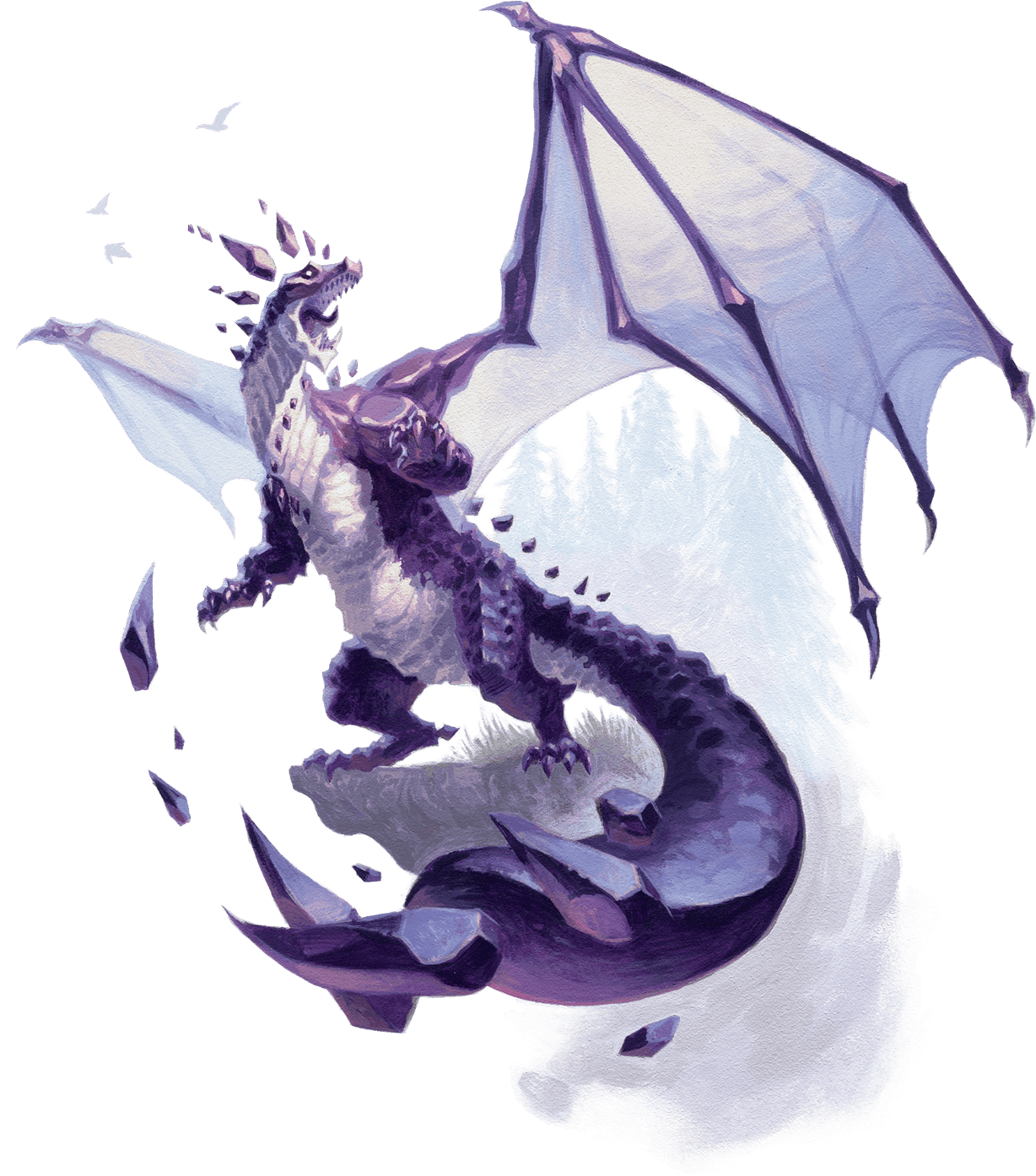


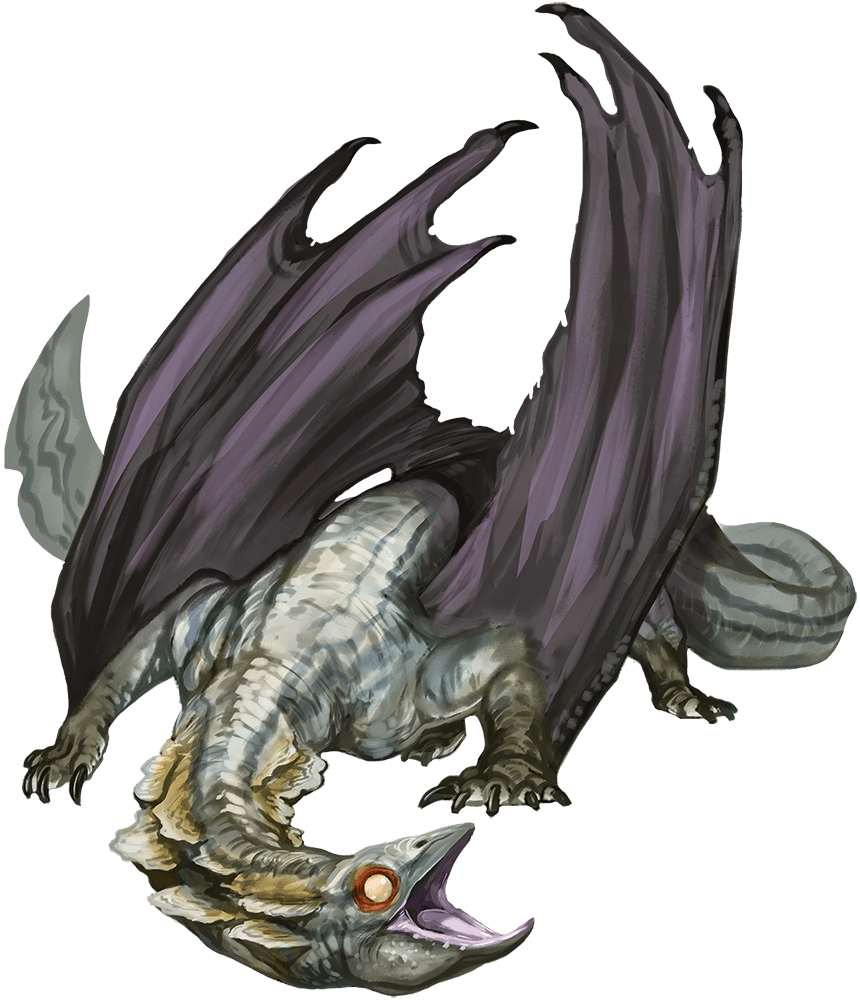


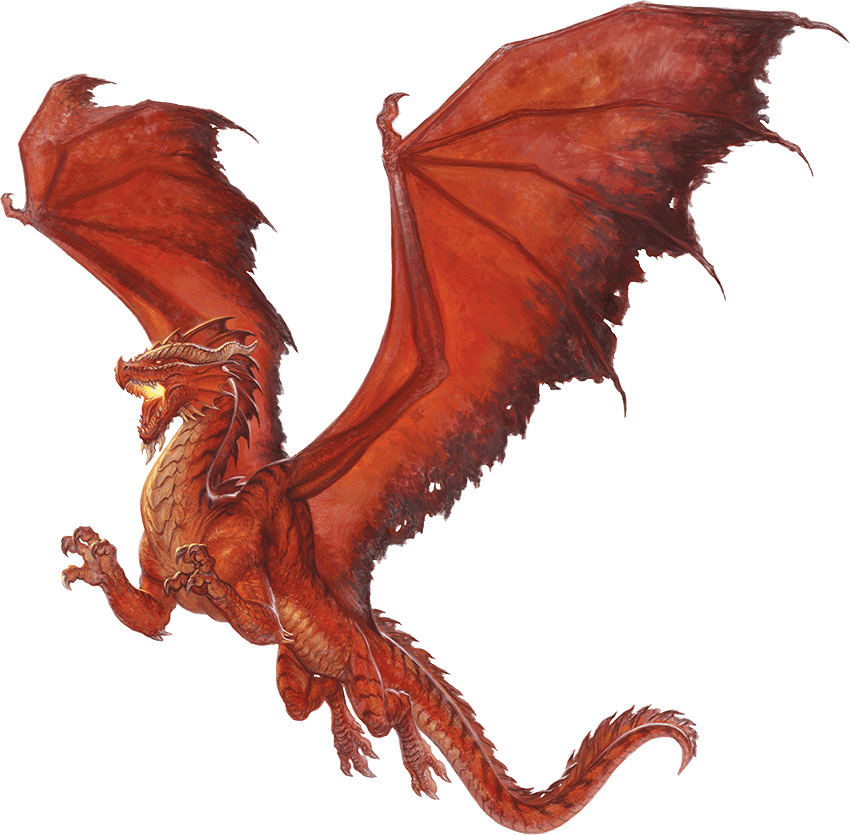
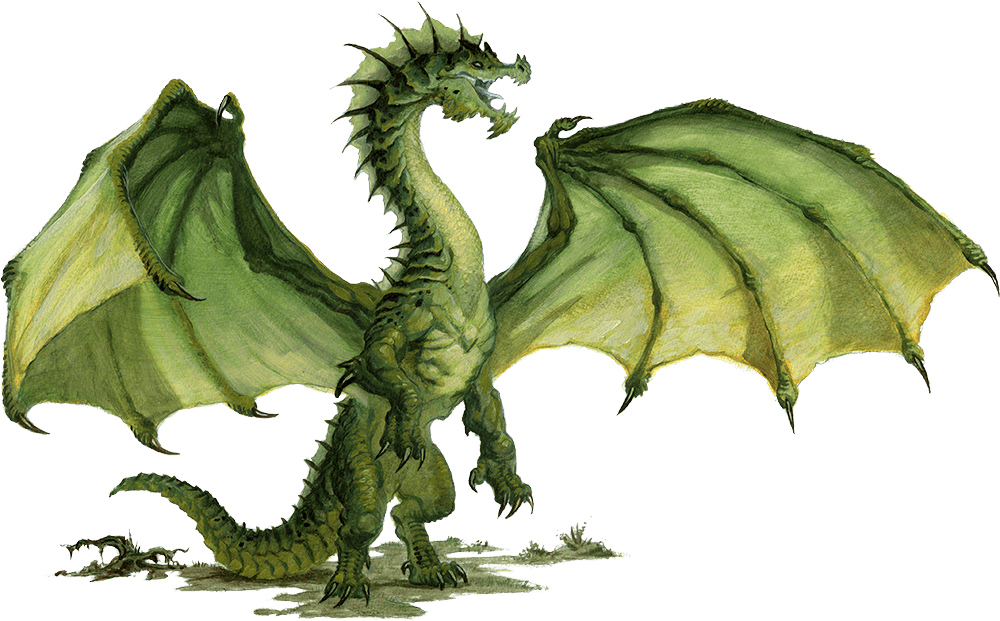


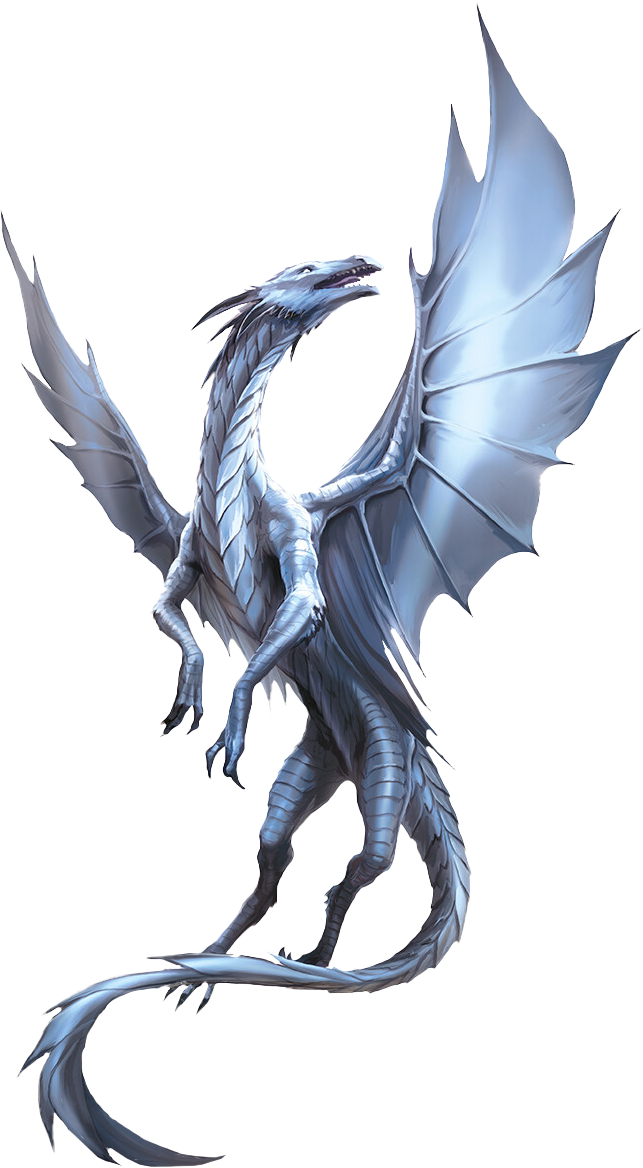








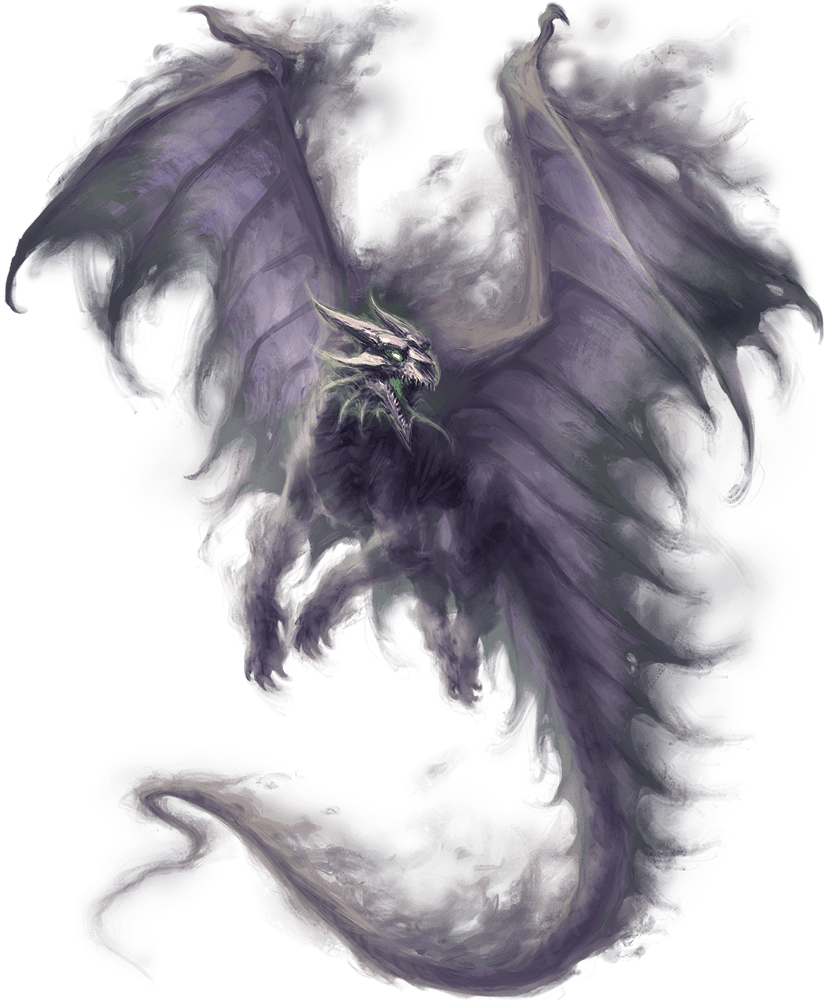

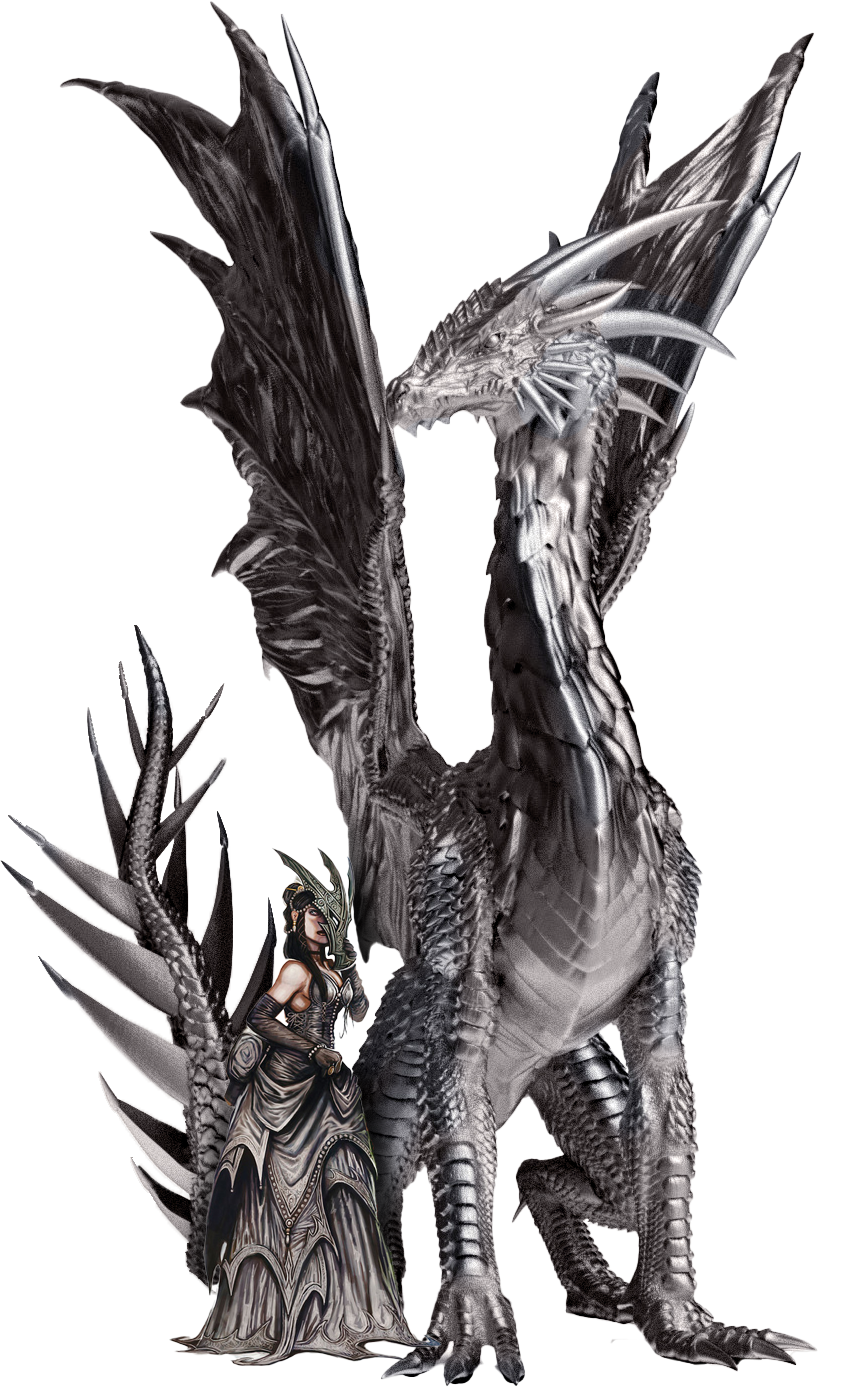


Comments